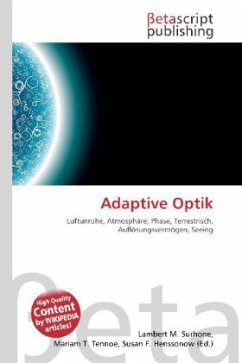Adaptive optics (AO) is a technology used to improve the performance of optical systems by reducing the effects of rapidly changing optical distortion. It is used in astronomical telescopes and laser communication systems to remove the effects of atmospheric distortion, and in retinal imaging systems to reduce the impact of ocular aberrations. Adaptive optics works by measuring the distortions in a wavefront and compensating for them with a spatial phase modulator such as a deformable mirror or liquid crystal array. AO was first envisioned by Horace W. Babcock in 1953, but did not come into common usage until advances in computer technology during the 1990s made the technique practical. Adaptive optics should not be confused with active optics, which works on a longer timescale to correct the primary mirror geometry itself. The simplest form of adaptive optics is tip-tilt correction, which corresponds to correction of the tilts of the wavefront in two dimensions (equivalent to correction of the position offsets for the image). This is performed using a rapidly moving tip-tilt mirror which makes small rotations around two of its axes.
Bitte wählen Sie Ihr Anliegen aus.
Rechnungen
Retourenschein anfordern
Bestellstatus
Storno








